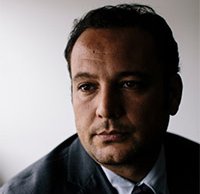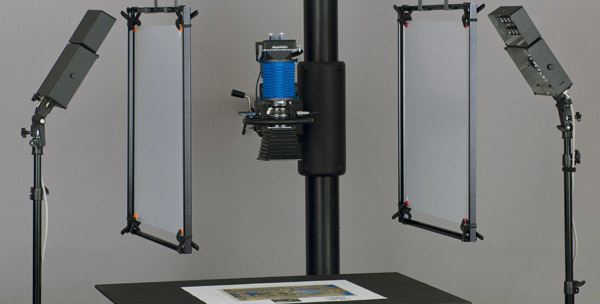Unique multispectral imaging technology helps preserve the stories of Syrian prisoners
posted Tuesday, September 26, 2017 at 4:00 PM EDT

When you think of digital cameras, it's likely you think of capturing landscape images, portraits or wildlife images. Perhaps you think about preserving family memories. There's an important and related aspect of digital imaging happening in museums and other conservation centers around the world, archival and cultural heritage imaging. Digital imaging technology has had a profound impact on how we research and preserve important historical documents.
With highly-sensitive artifacts and documents, it is not a case of simply owning a digital camera and snapping a photo of an item. Wavelengths and intensities of light matter a lot when archiving treasured objects. MegaVision's EV Camera is a multi-spectral imaging system which has been designed for the preservation and scholarly studies of cultural objects including parchments, paper, papyrus, fabric, dyes, inks and many other constituents of cultural objects and art.
The system captures high-resolution files with high dynamic range across a dozen or more spectral bands ranging from ultra-violet to near infrared. The monochromatic 50-megapixel digital back, which uses a CCD sensor, operates as part of a customizable and adjustable system of rails and bellows. It relies on an EV LED illumination system with 10 to 20 specific user-selectable wavelengths of light. It is highly precise and scientific, as it well should be when working to archive sensitive and significant objects. MegaVision's approach is unique because they use arrays of narrow-band LED light to capture spectral channels individually before compositing the final image rather than blast artifacts with single powerful lights. This ensures that sensitive objects are exposed to minimal light and essentially no heat.

We are discussing this archival photographic system specifically because of an archival project taking place at the United States Holocaust Memorial Museum which will utilize Mega Vision's archival digital imaging technology. Mansour Omari, a human rights activist, was held captive for nine months in an underground prison run by Maher al-Assad, the brother of Syrian President Bashar al-Assad. In his underground prison, an existence truly nightmarish in and of itself, Omari feared that for him and his fellow prisoners, their families would never find out what happened to them and that the truth of their brutal treatment would simply disappear.
Not knowing what would happen to him and his fellow prisoners, Mr. Omari, along with four other inmates, felt duty-bound to record the names of all 82 prisoners with the hopes of eventually informing their families about what had happened to them and the horrible treatment they continued to experience. The lists were sewn into the collar and cuffs of a shirt Omari smuggled out when he was the first among the group to be released. These scraps of material were ultimately lent to the United States Holocaust Memorial Museum.
When tomato sauce from paltry rations weren't good enough to use for ink, the inmates resorted to using blood from their gums mixed with flakes of rust they removed from the bars of their cells. They wrote on the scraps using sharpened chicken bones. Unsurprisingly, the pieces of fabric are highly sensitive and without digital archival processes, the information might have been lost forever. The ongoing Syrian War, which has led to the deaths and displacement of many people, as well as many prisoners of war that continue to be held, has unfortunately led to the disappearance of many innocent people. But thanks to Mr. Omari and a few of his fellow inmates, some of the victims and their stories have been preserved. You can read much more about this story at The New York Times.
On the way to Washington D.C. to capture images and preserve Omari's scraps of fabric, Ken Boydston of MegaVision said, "It has been my privilege to use the multispectral imaging system that we developed to recover many lost voices. From our images, entire manuscripts have been recovered; time-silenced voices from the past given a second chance to tell their stories." The project came together very quickly and without time for the team to raise funding. If you would like to donate to the project and to other similar projects, which are an integral part of preserving culture and history while ensuring that stories like Mr. Omari's are able to be told, head to the Early Manuscripts Electronic Library website and click the "Donate" button at the bottom.
If you would like to learn more about MegaVision's technology, you can read this paper about illumination exposure during multi-spectral imaging. You can also refer to this paper to learn more about multispectral and computational imaging methods with regards to documenting a British landscape painting from the 19th century.